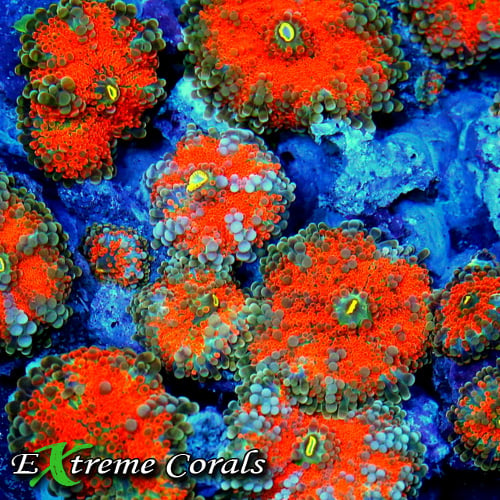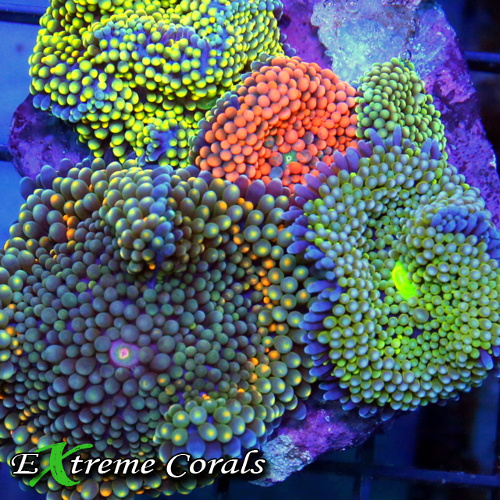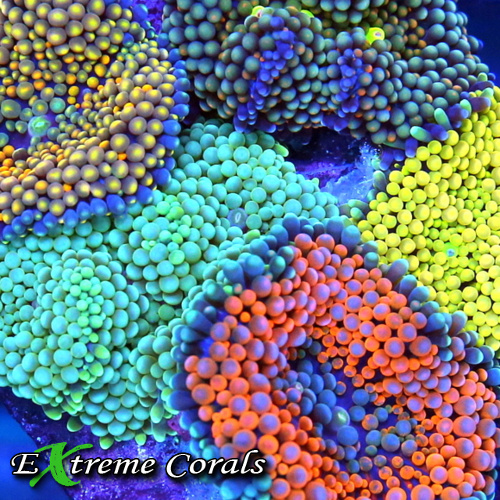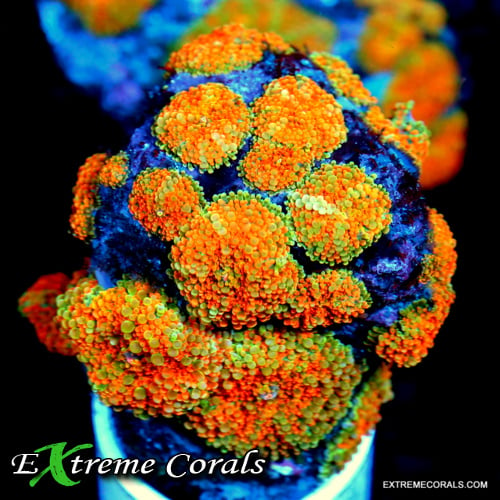Extreme Corals News and Updates
Ricordea vs. Other Coral Types: Understanding the Differences
Distinctions between Ricordea and other coral types in 'Ricordea vs. Other Coral Types: Understanding the Differences'!
In this blog post, we explore the unique characteristics and care requirements of Ricordea corals, known for their vibrant colors and hardy nature, making them a popular choice for both novice and experienced aquarium enthusiasts. We compare Ricordea to other coral types, highlighting differences in appearance, growth rates, and maintenance needs, offering practical tips for optimal care. By understanding these distinctions, readers can create a visually stunning and diverse reef tank that supports healthy coral growth
by scott Shiles • June 24, 2024
What are Ricordea Corals?
Ricordea corals are like little underwater gems, known for their bright, vibrant colors and wavy edges. Imagine large, colorful discs that add a burst of brightness to your aquarium. These corals are a favorite among both beginner and experienced hobbyists because they're easy to care for. These LPS Corals can thrive in various lighting conditions and water flows, making them a versatile and resilient choice for your underwater landscape.
Comparing Ricordea Corals to Other Coral Types

Ricordea corals stand out with their unique, bubble-shaped appearance and intense colors. While some other corals may have more subdued hues, Ricordea corals boast vibrant shades like orange, red, green, and blue. They are hardy and can tolerate fluctuations in water conditions better than many other types, making them excellent for beginners. Unlike some slower-growing corals, Ricordea can quickly spread across rock structures, filling your aquarium with color and life.
Key Differences in Appearance
When you look at Ricordea mushrooms, their bubble-like shape is quite distinct. Other coral types come in a variety of shapes and sizes, from smooth to branching structures. The colors of Ricordea corals are particularly striking, often outshining the more pastel or muted tones of other species. By understanding these differences, you can create a visually stunning and diverse reef environment in your tank.
Hardy and Soft Corals Explained
Ricordea corals are considered hardy, with a sturdy structure that can withstand varying water conditions. This makes them easier to care for in a home aquarium. Soft corals, on the other hand, are more delicate and require specific water conditions to thrive. For beginners, Ricordea is a great choice due to its resilience and low maintenance needs. Ultimately, the right coral for you depends on your experience level and the care you can provide.
Water Parameters and Care Tips

To keep your Ricordea mushrooms happy, maintain stable water conditions. Aim for a temperature between 75-78°F and a salinity level around 1.025. They prefer moderate to high lighting but be careful not to overexpose them, as too much light can cause stress. Regular water changes are essential to maintain high water quality, and it's crucial to avoid sudden changes in temperature or salinity. Proper acclimation when introducing Ricordea to your tank is key to their health and vitality.
Lighting and Placement Requirements
Ricordea corals thrive in medium to high lighting conditions, so placing them in the middle to upper parts of your aquarium is ideal. Some other corals might prefer lower light levels or specific light spectrums. Correct placement is vital for coral health; improper lighting can lead to issues like bleaching or slow growth. Research the needs of each coral type to ensure your tank provides the best environment for their growth and vibrancy.
Feeding Habits of Ricordea Corals

One of the great things about Ricordea corals is their simplicity in care. They primarily feed on light, absorbing nutrients from the water through their small mouths. This means they don't require direct feeding like some other coral types, making them perfect for beginners. However, occasional feeding of zooplankton can support their growth and enhance their vibrant colors.
Reproduction and Growth Patterns
Ricordea corals reproduce by splitting in half, and they grow at a steady pace of about an inch per year. Other coral types might reproduce through spawning or budding, leading to faster growth rates. Understanding these growth patterns can help you choose the right corals for your aquarium based on how quickly you want your tank to develop.
Potential Challenges in Keeping Ricordea Corals
While Ricordea corals are generally hardy, they can be sensitive to changes in water parameters, such as temperature and salinity fluctuations. They may also be prone to pests like zoanthid-eating nudibranchs. Maintaining stable water conditions and regularly inspecting your corals for signs of distress or infestation is crucial to their health.
Tips for Success
In summary, Ricordea corals are a fantastic choice for adding vibrant colors and relatively easy-to-care-for specimens to your reef tank. Here are some key tips for success:
- Vibrant and Resilient: Ricordea corals are known for their stunning colors and hardy nature.
- Optimal Conditions: Ensure proper lighting and water flow to support healthy growth.
- Regular Testing: Regularly test your water to maintain optimal conditions for all coral types.
- Compatibility: Consider how Ricordea will interact with other corals in your tank to avoid conflicts.
By following these guidelines, you can create a thriving, colorful coral reef aquarium that showcases the beauty and diversity of Ricordea and other coral types.

